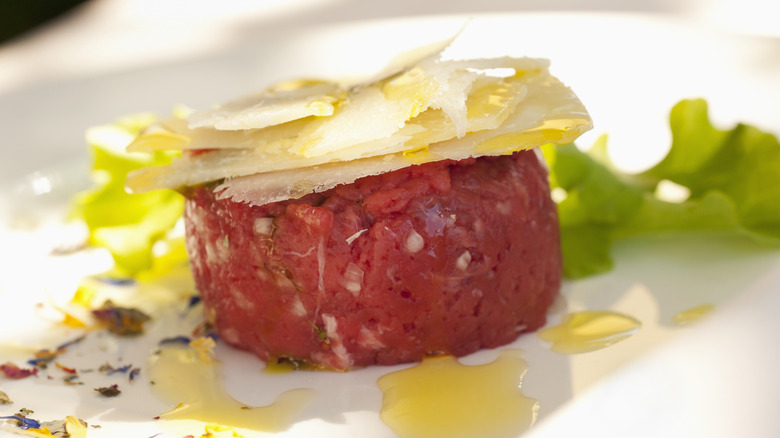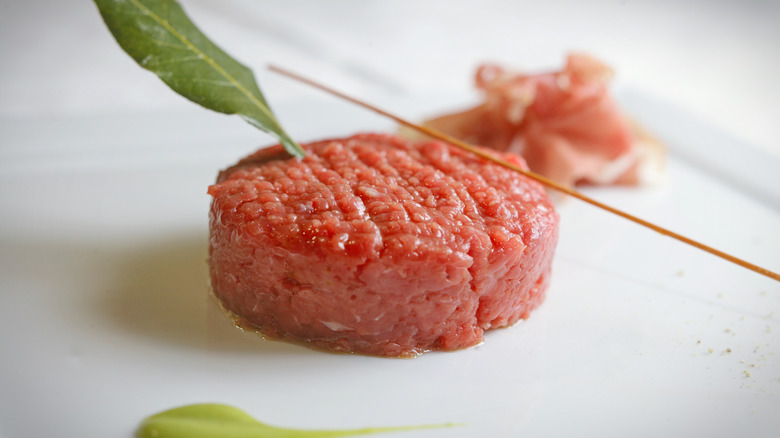
John Rizzo/Getty Images
Light and fresh yet surprisingly meaty, steak tartare is a French bistro classic that has also become a staple at restaurants throughout the United States. Even diners skeptical of eating raw beef are frequently won over by its complex mash-up of flavors and textures. The dish typically consists of minced beef mixed with onions, cornichons, chives, Dijon mustard and Worcestershire sauce, which is topped with an egg yolk to amplify the beef’s richness. But even though the French version of the dish may be the best known Stateside, there are other versions worth trying.
One simple yet wholly satisfying version is Italian steak tartare, also known as carne cruda all’albese (attributed to Alba, a town in Piedmont, Italy). Unlike paper-thin sliced beef carpaccio, one of Italian cuisine’s most famous appetizers, carne cruda calls for minced beef. To dig into the intricacies of steak tartare (and what makes the Italian version so enjoyable), Chowhound sought out exclusive advice from Jasper J. Mirabile Jr., the owner and chef of Jasper’s Restaurant in Kansas City, Missouri.
Unlike French chefs, he says, “Italian chefs only use a hint of garlic, olive or truffle oil, lemon, capers and sea salt for carne crudo, so the flavor is definitely different.” While the extra flavors and sumptuous yolk make the French version “almost a creamy-style beef dish,” Mirabile Jr. notes that “with the Italian version, you’re actually emphasizing the raw beef with a few ingredients.” Unsurprisingly, simplicity is the secret ingredient.
The key to homemade Italian steak tartare

MikeDotta/Shutterstock
If you’re making any kind of steak tartare at home, the most important thing you can do is skip the grocery store meat and pick up a higher-quality cut — after all, there’s no cooking process to kill off pathogens. Beyond that tidbit of wisdom, you might be wondering, what’s the secret to making restaurant-worthy Italian-style steak tartare?
According to Jasper J. Mirabile Jr., simplicity is key. Carne cruda, he says, is “one of my favorite dishes to prepare with minimal ingredients such as truffle oil, salt and lemon with a trace of garlic.” While he admits he enjoys a little bit of minced onion and capers “for an additional little crunch” on occasion, he says that most of the time, oil and lemon is enough to flavor the beef. “The emphasis in the Italian version is really on the quality of the meat,” he says. So, remember to ask your local butcher for their freshest tenderloin or top sirloin.
As for garnishing and serving the dish, Mirabile says, “Italian chefs love to serve crudo and carpaccio with crispy ciabatta bread or garlicky crostini alongside some arugula or micro greens.” Thin shavings of Parmesan cheese or white truffles can also make for extra-special toppings. Whatever you choose, “it should be fairly simple accompaniments,” Mirabile implores.


Dining and Cooking